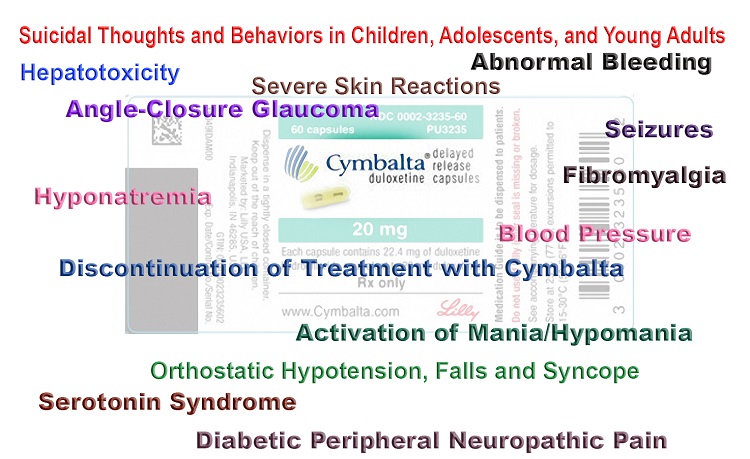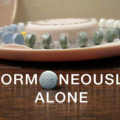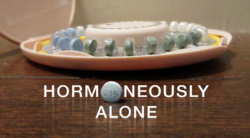Oral Contraceptives and Autism
Over the last several months, I have published a series of articles exploring the potential connection between the use of oral contraceptives and the increased prevalence of Autism Spectrum Disorder (here, here, here, here, and here). It is my hypothesis that the synthetic hormones in oral contraceptives, which were created to imitate natural human hormones and disrupt endocrine function to prevent pregnancy, may be causing harmful neurodevelopmental effects in the offspring of women who use them [1].
The mechanisms by which oral contraceptives instigate neurodevelopmental changes is slowly emerging. It appears that in addition to preventing pregnancy, synthetic hormones like ethinylestradiol, used in most birth control formulations, initiate epigenetic alterations in the oocytes (eggs) causing persistent changes in expression of the estrogen receptor beta gene (ERβ). When those eggs become fertilized and conception ensues, the changes in the estrogen receptor gene impact the expression of autism and other neurodevelopmental disorders.
Ethinylestradiol is an Endocrine Disruptor
Here is how the ethinylestradiol used in oral contraceptives adversely modifies the condition of the oocyte. Bear with me, this is a bit complicated, but if you are woman who uses or is contemplating using oral contraceptives, this information is important to understand.
Ethinylestradiol is a known endocrine disruptor. Anything that disrupts endogenous hormones can be considered an endocrine disruptor. Evidence is emerging that ethinylestradiol may trigger what is called DNA methylation of the estrogen receptor gene. This then causes decreased messenger RNA resulting in impaired brain estrogen signaling in offspring [2]. Let’s think more deeply about this.
Methylation means that, by way of a chemical process, a gene is turned on (hypomethylation) or turned off (methylation) by an enzyme or protein. Researchers believe that methylation is one of a number of mechanisms by which environmental interactions influence genetic activity. In this case, ethinylestradiol silences or turns off some important processes that are associated with estrogen signaling, namely receptor activity.
Methylation and other epigenetic reactions influence health and disease processes across generations. This is called transgenerational transmission. So, I suspect that the deleterious effects of ethinylestradiol on the estrogen receptor gene are transgenerational. This is possible because the estrogen receptor gene may be an imprinted gene. Imprinting is a dynamic epigenetic phenomenon by which certain genes are expressed in a parent-of-origin manner. If the allele, an alternative form of the same gene, inherited from the father is imprinted, it is thereby silenced, and only the allele from the mother is expressed. If the allele from the mother is imprinted, then only the allele from the father is expressed.
If the estrogen receptor gene is an imprinted gene and silenced, then the oral contraceptive-induced methylation marks could be protected from global demethylation. Global demethylation is a protective process which is believed to occur throughout somatic cell differentiation and happen only twice during development, in primordial germ cells and in the pre-implantation embryo. If the methylation marks are protected from global demethylation, they will be preserved through fertilization and beyond to progeny generations.
To sum this up, durable changes to the function of the cells would be passed on by the aberrant methylation that piggybacks on the normal imprinting mechanism that protects epigenetic markings from reversal or demethylation. Ethinylestradiol, while successful at preventing pregnancy, may be damaging stored oocytes in such a manner that the offspring that emerge from those oocytes carry that same damage.
In addition, deleterious effects of exposure to oral contraception could perpetuate or even increase over generations as a result of both transgenerational transmission of the altered epigenetic programming and the continued exposure across generations. This has the potential to impart disease sensitivity at a later point in time [3,4,5]. While this concept, in the case of oral contraceptive use, is speculative, transgenerational imprinting was first studied in human beings in cases of nutritional factors [6,7,8]. In addition to nutritional factors, animal studies have shown that estrogens, androgens, progestagens, or similar receptor-level acting molecules, such as endocrine disruptors, can have harmful transgenerational effects [4,9,10].
How Impaired Estrogen Receptors and Estradiol Regulation Affects Brain Function
Estrogen receptors affect the regulation of endogenous estradiol concentrations. Estradiol is the primary estrogen our body synthesizes to regulate a variety of reproductive and non-reproductive functions. Estrogen receptors are located all over the body, in the heart, lungs, fat cells, and in the brain.
Maintaining appropriate estradiol concentrations in the brain is critical for mood, memory and a number of other cognitive functions. Estradiol is critically important because it directly influences brain function through the estrogen receptors located on neurons in many areas of the brain. Estradiol has direct protective effects on neurons and helps with the maintenance and survival of neurons. Endogenous estrogens, like estradiol, stimulate creation of nerve growth and viability, repair of impaired neurons, and influence dendritic branching. Estradiol also increases the concentration of neurotransmitters such as serotonin, dopamine, and norepinephrine and affects their release, reuptake, and enzymatic inactivation. In addition, estradiol increases the number of receptors for these neurotransmitters.
Synthetic estrogens, like ethinylestradiol used in many birth control formulations, may adversely affect the equilibrium of the endogenous estrogens like estradiol by disrupting sensitive hormonal pathways and impairing estrogen receptor expression. When the estrogen receptors become impaired, not only are hormone concentrations likely affected, but those functions that this hormone and receptor are responsible for regulating, are altered as well; functions like mood, memory and cognition.
Estrogen Receptors, Mood, and Cognition
Impaired estrogen receptor expression has been associated with altered emotional responses, depression, mood disorders, cognitive dysfunction, brain degeneration, and many other endocrine-related diseases [11-16]. In addition to confirmation that estrogen receptors are a factor in emotional responses [11], there is compelling evidence for estradiol’s involvement in the regulation of mood and cognitive functions [12,13,14]. Because the hippocampus, entorhinal cortex, and thalamus seem to be estrogen receptor beta (ERβ)-dominant areas, this suggests a function for ERβ in cognition, non-emotional memory, and motor functions [13,14]. Children with autism have notable difficulties in all of these areas.
Research also shows that estrogen is able to regulate the serotonin (5-HT) system, which has been associated with affective disorders [13,14]. Furthermore, recent studies using estrogen receptor knockout mice have assisted in defining the function of estrogen receptors in brain degeneration [15]. In vivo and in vitro studies also show that estrogen receptors are mechanistically involved in endocrine-related diseases [16]. Given that ERβ is the main estrogen receptor expressed in the cerebral cortex, hippocampus, and cerebellum [17], it is not difficult to imagine that epigenetic mechanisms cause persistent changes in gene expression of estrogen receptor beta (ERβ) that result in neurodevelopmental disorders like autism.
Interestingly, a recent study discovered a significant association of the lowered levels of the ERβ gene with scores on the Autism Spectrum Quotient and the Empathy Quotient in people with autism [18].
Evidence of Dysregulation of Estrogen Receptor Beta
Motivation for this epigenetic hypothesis comes from a recent study by Pillai et al., Dysregulation of Estrogen Receptor beta (ERbeta), Aromatase (CYP19A1) and ER Co-activators in the middle frontal gyrus of autism spectrum disorder subjects. This study examined the brain tissue of people that had ASD’s. The scientists found that the ASD brain tissue had far lower levels of a key estrogen receptor and other estrogen-related proteins [19]. The scientists measured the expression of proteins involved with estrogen signally pathways in brain tissue measuring levels of estrogen receptor beta and aromatase, an enzyme that changes testosterone to estradiol. Pillai et al. found 35 percent less ERβ. In addition, they discovered much less messenger RNA of estrogen co-regulators SRC1, CBP and P/CAF at 34 percent, 77 percent and 52 percent respectively [19]. Their results provide compelling evidence of the dysregulation of ERβ and co-regulators in the brain of subjects with ASD. Their data suggest that the synchronized regulation of ER signaling molecules has a significant function in ER signaling in the brain and that this coordinated network may be compromised in people with ASD.
Growing research supports the hypothesis that epigenetic mechanisms are causing persistent changes in gene expression of estrogen receptor beta that result in autism in offspring of mothers who use oral contraceptives. What is perhaps most troubling, is that it may be that the adverse effects of DNA methylation of the estrogen receptor gene are transgenerational.
Final Thoughts
We are just beginning to understand how endocrine disruptors can modify the development of specific tissues that lead to increased vulnerability to diseases and disorders. And, we are just beginning to appreciate the critical roles that hormones play in neurodevelopment, including neuroendocrine circuits that control physiology and sex-specific behavior that could result in behavioral and psychiatric conditions. As women, we have a crucial decision to make about which kind of birth control we use. Because there are inherent risks in all medications that we take, it is important that we fully understand all of the risks of the drugs we choose to use. Although this research is in its early stages, there is a growing body of evidence that ethinylestradiol initiates epigenetic mechanisms that cause persistent changes in gene expression of the estrogen receptors that contribute to the risk of autism in offspring.
References
- Strifert, K (2015) An epigenetic basis for autism spectrum disorder risk and oral contraceptive use. Med Hypotheses. 2015 Sep 6. pii: S0306-9877(15)00323-0. doi: 10.1016/j.mehy.2015.09.001
- Strifert, K (2014) The link between oral contraceptive use and prevalence in autism spectrum disorder. Medical Hypotheses December 2014 Volume 83, Issue 6, Pages 718–725
- Skinner M (2008) Epigenetic programming of the germ line: effects of endocrine disruptors on the development of transgenerational disease. Reproductive BioMedicine Online Vol 16 No 1. 23-25.
- Skinner M (2014) Endocrine disruptor induction of epigenetic transgenerational inheritance of disease. Molecular and Cellular Endocrinology Jul 31. pii: S0303-7207(14)00223-8. doi: 10.1016/j.mce.2014.07.019.
- Vaiserman A (2014) Early-life Exposure to Endocrine Disrupting Chemicals and Later-life Health Outcomes: An Epigenetic Bridge? Aging and Disease Jan 28;5(6):419-29. doi: 10.14336/AD.2014.0500419.
- Kaati G, Bygren LO, Edvinsson S (2002) Cardiovascular and diabetes mortality determined by nutrition during parents’ and grandparents’ slow growth period. Eur J Hum Genet. 2002 Nov;10(11):682-8.
- Pembrey ME (2002) Time to take epigenetic inheritance seriously. Eur J Hum Genet. 2002 Nov;10(11):669-71.
- Pembrey ME, Bygren LO, Kaati G, Edvinsson S, Northstone K, et.al (2006) Sex-specific, male-line transgenerational responses in humans. Eur J Hum Genet. 2006 Feb;14(2):159-66.
- Csoka, A B, Szyf, M (2009) Epigenetic side-effects of common pharmaceuticals: A potential new field in medicine and pharmacology (Article). Medical Hypotheses Vol. 73, Issue 5, 2009, 770-780.
- Csaba G (2011)The biological basis and clinical significance of hormonal imprinting, an epigenetic process. Clinical Epigenetics August 2011, Volume 2, Issue 2, pp 187-196.
- Amin Z, Canli T, Epperson CN (2005) Effect of estrogen–serotonin interactions on mood and cognition. Behav Cogn Neurosci Rev 2005, 4:43-58.
- Berman KF, Schmidt PJ, Rubinow DR, Danaceau MA, Van Horn JD, et. al (1997) Modulation of cognition-specific cortical activity by gonadal steroids: a positron-emission tomography study in women. Proc Natl Acad Sci USA 1997, 94:8836-8841.
- Ostlund H, Keller E, Hurd YL (2003) Estrogen receptor gene expression in relation to neuropsychiatric disorders. Ann NY Acad Sci 2003 Dec;1007:54-63.
- Osterlund MK, Hurd YL (2001) Estrogen receptors in the human forebrain and the relation to neuropsychiatric disorders. Prog Neurobiol 2001 Jun;64(3):251-67.
- Mueller SO, Korach KS (2001) Estrogen receptors and endocrine diseases: lessons from estrogen receptor knockout mice. Curr Opin Pharmacol 2001 Dec;1(6):613-9.
- Candelaria NR, Liu K, Lin CY. (2013) Estrogen receptor alpha: molecular mechanisms and emerging insights. J Cell Biochem. Oct;114(10):2203-8. doi: 10.1002/jcb.24584.
- Bodo C, Rissman EF (2006) New roles for estrogen receptor beta in behavior and neuroendocrinology. Front Neuroendocrinol 2006, 27(2):217-232.
- Chakrabarti B, Dudbridge F, Kent L, Wheelwright S, Hill-Cawthorne G, et.al (2009) Genes related to sex steroids, neural growth, and social-emotional behavior are associated with autistic traits, empathy, and Asperger syndrome. Autism
- Crider A, Thakkar R, Ahmed A, Pillai A (2014) Dysregulation of Estrogen Receptor beta (ERbeta), Aromatase (CYP19A1) and ER Co-activators in the middle frontal gyrus of autism spectrum disorder subjects. Molecular Autism 2014, 5: 46. DOI: 10.1186/2040-2392-5-46.
We Need Your Help
More people than ever are reading Hormones Matter, a testament to the need for independent voices in health and medicine. We are not funded and accept limited advertising. Unlike many health sites, we don’t force you to purchase a subscription. We believe health information should be open to all. If you read Hormones Matter, like it, please help support it. Contribute now.
Yes, I would like to support Hormones Matter.
This article was first published on October 15, 2015.



















